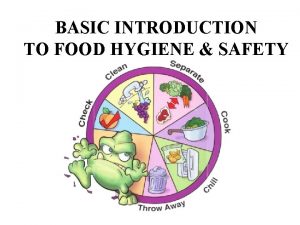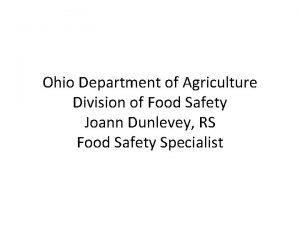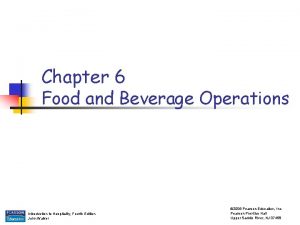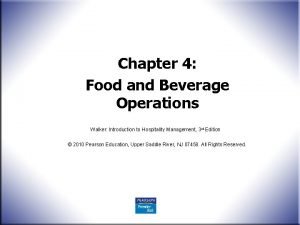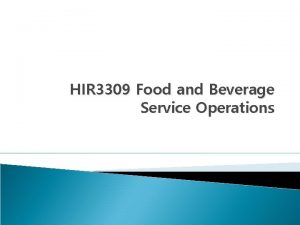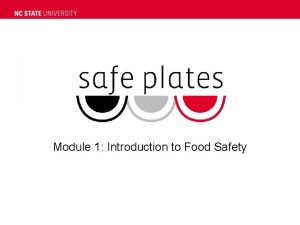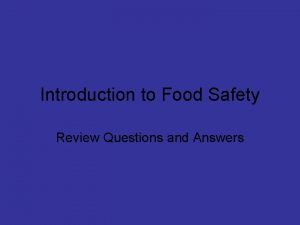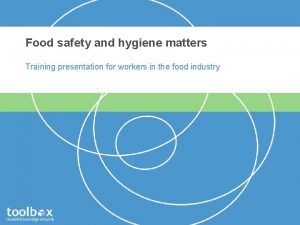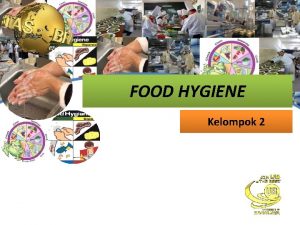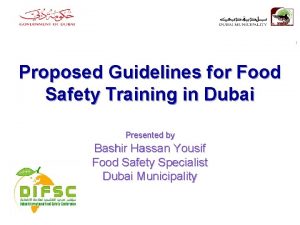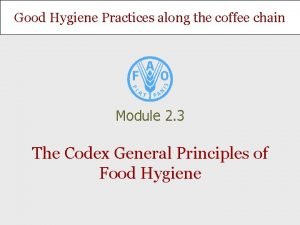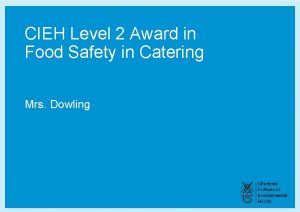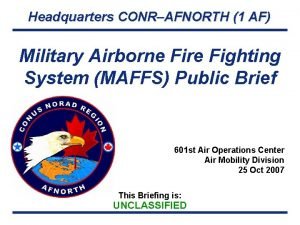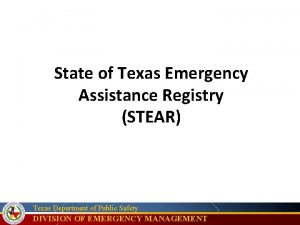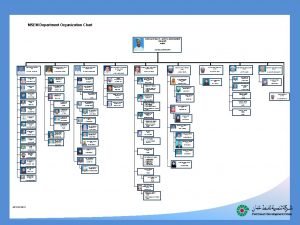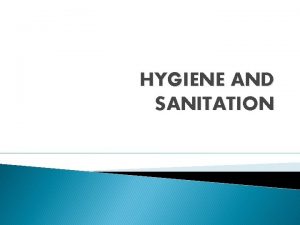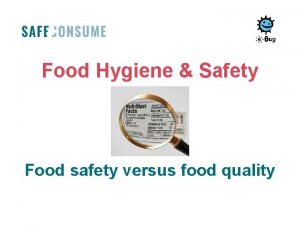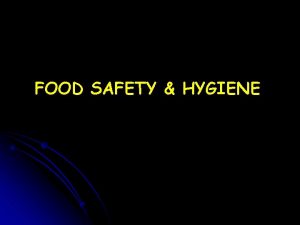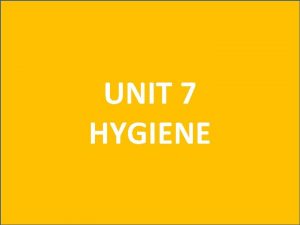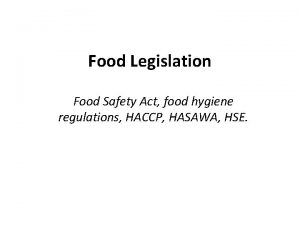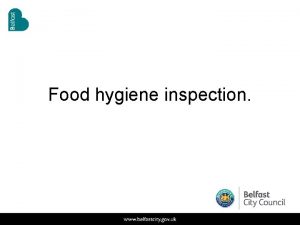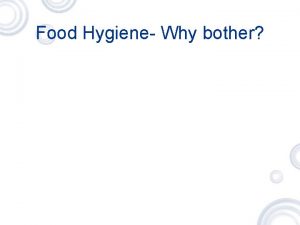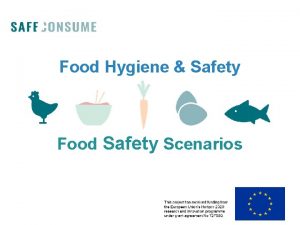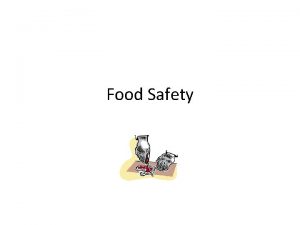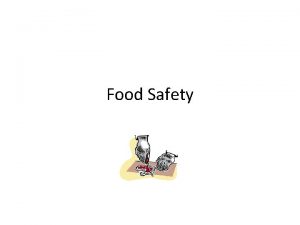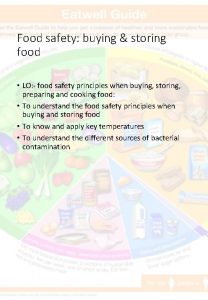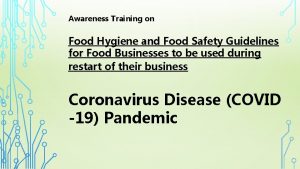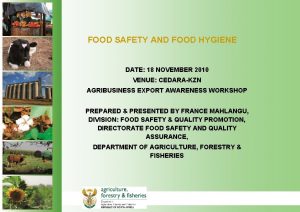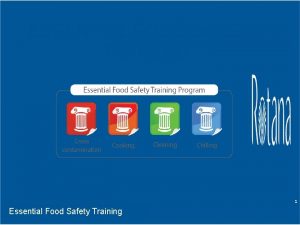Introduction to Military Hygiene Military Food Safety Department
































- Slides: 32

Introduction to Military Hygiene Military Food Safety Department of hygiene, ecology basics and life safety Altai State Medical University

I. Military Hygiene as a Science

MAIN DEFINITIONS 1. Military Hygiene (MH) is a discipline that studies the regularities of the influence of various unfavorable factors on the body of servicemen, which develops ways and means of preserving and strengthening health, increasing the efficiency and fighting efficiency of personnel. 2. The Aim of MH is the high combat effectiveness of a soldier and an officer

MAIN DEFINITIONS Tasks: 1. Study of adverse factors of environment, social conditions 2. Elimination or restriction to a safe level of adverse environment, factors and social conditions 3. Scientific substantiation and development of differentiated hygienic standards 4. Implementation of the developed civil and military rules and norms into practice 5. Forecasting of sanitary and hygienic situations for immediate and remote perspectives

MAIN DEFINITIONS Research methods in MH 1) physiological 3) chemical 2) physical 4) anthropometrical 6) statistical 5) toxicological 7) clinical

State Sanitary and Epidemiological Surveillance in the Armed Forces Directions of sanitary-epidemiological surveillance and medical control in the Armed Forces for the deployment of military personnel for the food for the water supply for the conditions of military labor and habitability for vital activity and life of troops in wartime and emergency situations for bath and laundry service of personnel

II. SANITARY SUPERVISION FOR NUTRITION OF TROOPS IN FIELD CONDITIONS

Features of food supply in the field Ø 1. The food supply is decentralized (the need for catering for small groups of 5 -10 -25 people and individual meals). Ø 2. The probability of irregular eating, violation of his regime and a decrease in the usefulness (quantitative and qualitative). Ø 3. Absence of conditions for storage and processing of perishable products. Ø 4. Use in the diet of dry rations (canned foods) with a low content of highgrade vitamins (risk of development of hypovitaminosis). Ø 5. Low level of communal improvement with a deficit of benign water does not exclude the possibility of food poisoning and diseases.

Features of food supply in the field Ø 1. Possibility of using trophy food. Ø 2. The probability of the enemy using weapons of mass destruction, which creates the need to protect food from contamination of weapons of mass destruction, as well as their special treatment. Ø 3. Changing the norms of supplying food to the downside.

Principles of nutrition • 1. Three meals a day; hot meals at least 2 times a day • 2. Observance of the basic laws of rational nutrition: • - the law of qualitative adequacy; • - the law of quantitative adequacy

Kinds of rations Ration is the food given to conscripts, as well as to ensigns, midshipmen and some officers and, in some cases, members of their families. - rations of the boiler allowance; - dry rations; - and additional.

Kinds of rations • • • Combined arms ration No. 1 Race Pack No. 2 Marine ration No. 3 Underwater ration No. 4 Therapeutic ration No. 5 Rations for pupils of military colleges No. 6 *** The norms of daily allowance of servicemen are determined taking into account the "Norms of physiological requirements for food substances and energy" for different groups of the population

Individual food intake Dry ration is a set of products intended for feeding servicemen, as well as civilians, in conditions where it is not possible to cook hot food. The dry ration is calculated on the nutrition of one person during the day, or for one meal.

Requirements for dry rations Ø Possibility of long-term storage (mayonnaise, fresh fruit, etc. are excluded); Ø Products included in the dry ration should be ready for use, or easy to prepare; Ø In the dry ration should include easily digestible products that do not cause food disorders, allergies, etc. ; Ø Packaging of dry soldering should protect it from water and contamination; Ø Sufficient food and energy value.

Individual food intake consists of: • • • Canned foods (stewed meat, condensed milk, etc. ); Dried and freeze-dried products (milk powder, instant coffee, instant soups); Crackers, crackers or biscuits; Food additives (salt, sugar, condiments); Vitamins. *** In addition to food: Disposable tableware; Means of hygiene (disinfecting napkins, chewing gum); Means for heating products (dry fuel); Means for water disinfection.

Ration in Russian Army

Food intake on march • • • In preparation for the march (army’s moving), food supplies are replenished to the norm, maintenance of field kitchens and towing vehicles is being carried out. If the march takes place during the day, the first reception of hot food is planned for 1 -1. 5 hours before the exit. Lunch is organized in the second half of the daily crossing, when a two-hour halt is foreseen. Field kitchens should arrive in the recreation area, having hot water in the boilers. The minimum time required for cooking hot food from canned products and food concentrates with boilers in boilers is 50 -55 minutes. Dinner is given in the night rest area. When a night march is performed, the staff will be given a hot dinner before going out, the subsequent meals will be organized in the morning and afternoon during a halt and daytime rest. At night, by means of the daily allowance, intermediate meals and hot tea are given.

Food intake in defense • A platoon of supply in the defense deploys all elements of the food item. Hot food is cooked three times a day mainly from fresh products. • Reception of food by personnel is organized at a battalion food station in specially equipped places. The distribution of hot food is made directly to the kettle of each soldier or in thermos bottles to the unit through the pods.

Food intake on attack ü Before starting the nomination from the waiting area, all the personnel are given hot food. ü During the offensive, a supply platoon, following the battalion's battle formations. ü At short stops, the products are placed in boilers with boiling water, cooking is carried out in motion. ü If, according to the conditions of the situation, it is not possible to distribute food to the personnel from the kitchens in the pots, the food is delivered to him in thermos by the pods allocated from the units.

Duties of the medical service in the organization of food intake The head of the medical service participates: • in the development of diet, • in the layout of products, organizes and carries out a systematic control over the quality of food, the conditions of storage and transportation of food, the sanitary condition of food facilities, the state of health and personal hygiene of food service personnel with the maintenance of personal health records. • The doctor on duty every day before the arrival of the daily attire carries out his examination and gives permission to work.

Tasks of medical service • 1. Prevention of food poisoning. • 2. Monitoring the effectiveness of protection of food products and technology from weapons of mass destruction. • 3. Expertise of food. • 4. Prevention of hypovitaminosis. • 5. Hygienic education.

Requirements for battalion food point In peacetime, the food of servicemen in the field is carried out according to the same norms of food rations as in places of permanent dislocation. For this purpose, a battalion food point is being developed. The head of the food service, who has at his disposal field technical means, is responsible for the organization of food in the field.

Requirements for battalion food point In choice of placement: Ø the protective properties of the terrain and the presence of sufficient disguise; Ø favorable sanitary condition of the area, remoteness from possible sources of pollution (landfill, highway, etc. ); Ø convenient ways to come or drive. *** The best protective properties are wooded (sparse forest, shrub), crossed areas, ravines, folds of the terrain.

Requirements for battalion food point q Three or four trailer trucks, three or four cars for transportation of battalion food points products and equipment, one mechanized boiler, one water tanker for water are located on a clean, not flooded area of the correct form with a size of at least 100 x 100 meters). One camp kitchen serves one company (100 people). q q Kitchens are placed at a distance of 30 m from one another. 15 m from the kitchen there is a place for cleaning potatoes and vegetables, in 25 m - the point of washing bowlers, mugs and spoons; in 50 m - a place (pit) for collecting food waste; in 75 m - a toilet for cooks and kitchen attire. q q q

Weapons of mass destruction • Weapons of mass destruction (WMD) includes: – Chemical weapon – Biological weapon – Nuclear weapon

Nutrition in case of use of WMD When the enemy applies weapons of mass destruction or in the event of emergency situations leading to contamination of the territory by • • • radioactive, poisonous substances or bacterial agents, it is possible that they contaminate food and cooked food when storing and transporting food, while cooking and distributing food.

Methods of cleaning food products 1. Disinfection is a complex of measures aimed at the destruction of pathogens of infectious diseases and the destruction of toxins on the objects of the external environment. 2. Degassing is one of the types of clearing, which is used for the destruction (neutralization) of poisonous substances or their removal from the contaminated surface, 3. Deactivation is one of the types of clearing, which is used for the removal of radioactive substances from the contaminated area, from the surface of buildings, structures, machinery, clothing, personal protective equipment, water, food.

Disinfection In the field, boiling and chemical treatment can be used to disinfect food. *** - The metal containers are boiled in a 3% solution of soda for at least 2 hours. - Canned in a glass container is decontaminated by immersion for 30 minutes in a 5% solution of monochloramine or 3% solution of bleach. - Wooden or non-tight containers are disinfected by irrigation with 20% bleach solution After removing from the container food is cooked for at least 2 hours. Fresh meat and large fish should be cut into pieces with a mass of not more than 1 kg.

Degassing • Degassing of food products can be made by airing, removing the surface contaminated product layer, washing with water, cooking. *** Do not degrade and destroy those parts of food that are contaminated with droplet poisoning substances. Significant difficulties are the degassing of fatty foods, since many poisoning substances are readily dissolved in fats and can persist there for a long time without loss of toxic properties.

Deactivation • • • Deactivation of food in the military unit is mainly provided through the mechanical removal of radioactive substances. If the foodstuffs were stored in a sealed container and did not acquire the induced radioactivity, then they can be used after deactivation of the container surface and dosimetric control. Deactivation of metal and glass containers is usually done by washing with water or by wiping with rags soaked in water. If the products are in bags, then different ways of separating the outer contaminated product layer from the internal one are used. The simplest way is to moisten the bag by spraying with water. After that, the bag is expanded, the top is carefully rolled up and the contents of the bag are shoveled into a clean bag.

Prevention of hypovitaminosis - the issuance of synthetic vitamins or the use of wild vitamins (herbaceous plants - sorrel, pine, nettle, as well as trees - maple, birch, linden). *** A good source of vitamins can be sprouted peas, wheat, oats or rye, which are used for cooking salad, porridge or seasoning for the first dishes. There is a lot of vitamin C in the needles of coniferous trees. Method for obtaining vitamin infusions from needles: - washed needles are lowered for 2 -3 minutes in boiling water, ground, poured three times with boiling water and insist 1 -2 hours. To replenish the lack of vitamin C in food is best by adding the drug to sweet dishes.

Thanks for attention!
 Basic introduction to food hygiene
Basic introduction to food hygiene Military hygiene
Military hygiene Virginia department of agriculture and consumer services
Virginia department of agriculture and consumer services Ohio department of agriculture food safety
Ohio department of agriculture food safety Catering organization
Catering organization Introduction to food and beverage service department
Introduction to food and beverage service department Introduction to food and beverage service
Introduction to food and beverage service Introduction to food and beverage service department
Introduction to food and beverage service department Control measures for physical hazards
Control measures for physical hazards Module 1 introduction to food safety
Module 1 introduction to food safety Introduction to food safety answers
Introduction to food safety answers Food hygiene matters
Food hygiene matters Pengertian higiene adalah
Pengertian higiene adalah Food hygiene training in dubai
Food hygiene training in dubai Definition of food hygiene
Definition of food hygiene Definition of food hygiene
Definition of food hygiene Cieh level 2 award in principles of haccp
Cieh level 2 award in principles of haccp Unit 2 food food food
Unit 2 food food food Grazing food chain diagram
Grazing food chain diagram Military fire safety
Military fire safety Undss logo
Undss logo Texas department of public safety
Texas department of public safety Hse advisor adalah
Hse advisor adalah Georgia department of motor vehicle safety
Georgia department of motor vehicle safety Food and beverage department chart
Food and beverage department chart Nnnqq
Nnnqq What is catzoc
What is catzoc Safety care 2 person stability hold
Safety care 2 person stability hold Personal safety vs process safety
Personal safety vs process safety Ind safety report
Ind safety report Basic safety construction site safety orientation
Basic safety construction site safety orientation 00101-15 basic safety
00101-15 basic safety Biotechnology and food safety
Biotechnology and food safety
